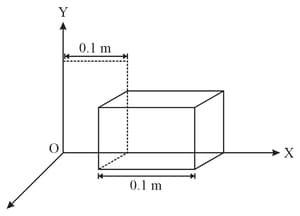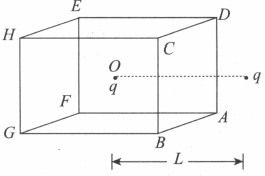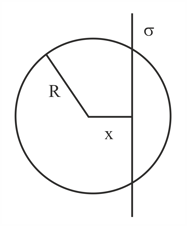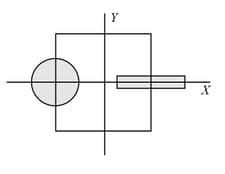The electric field inside a sphere which carries a charge density proportional to the distance from the centre (where, is constant) is,

Important Questions on Electric Charges and Fields
Due to charge inside a cube, the electric field is, , , . The charge inside the cube is (approximately),

A charged particle is placed at the centre of cube of length . Another same charge is placed at a distance from . Then, the electric flux through is,

An infinite uniformly charged sheet with surface charge density cuts through a spherical gaussian surface of radius at a distance from its center as shown in the figure. The electric flux through the gaussian surface is,

A disk of radius having a uniformly distributed charge is placed in the plane with its centre at . A rod of length carrying a uniformly distributed charge is placed on the -axis from to . Two point charges and are placed at and , respectively. Consider a cubical surface formed by six surfaces, . The electric flux through this cubical surface is,

